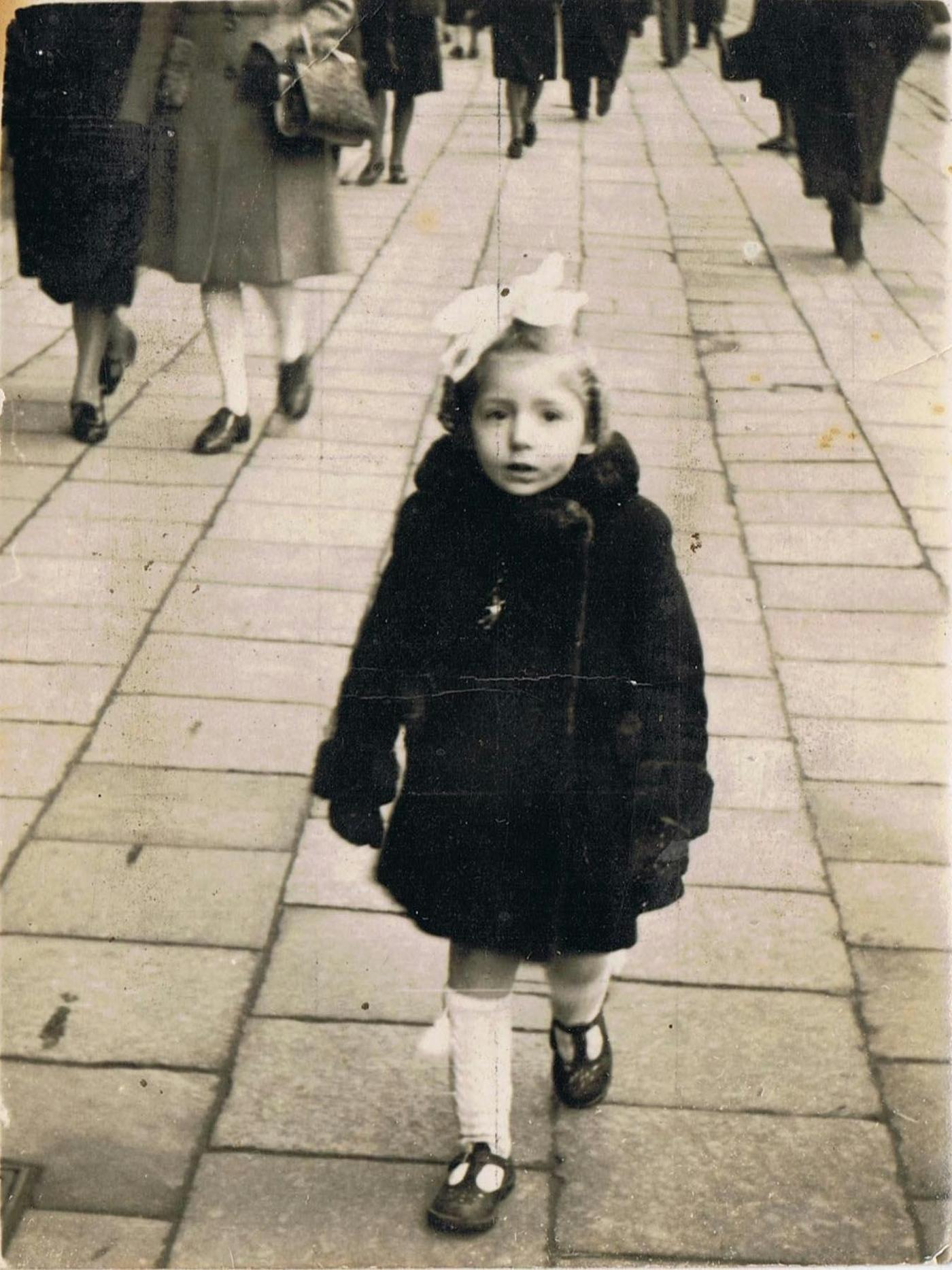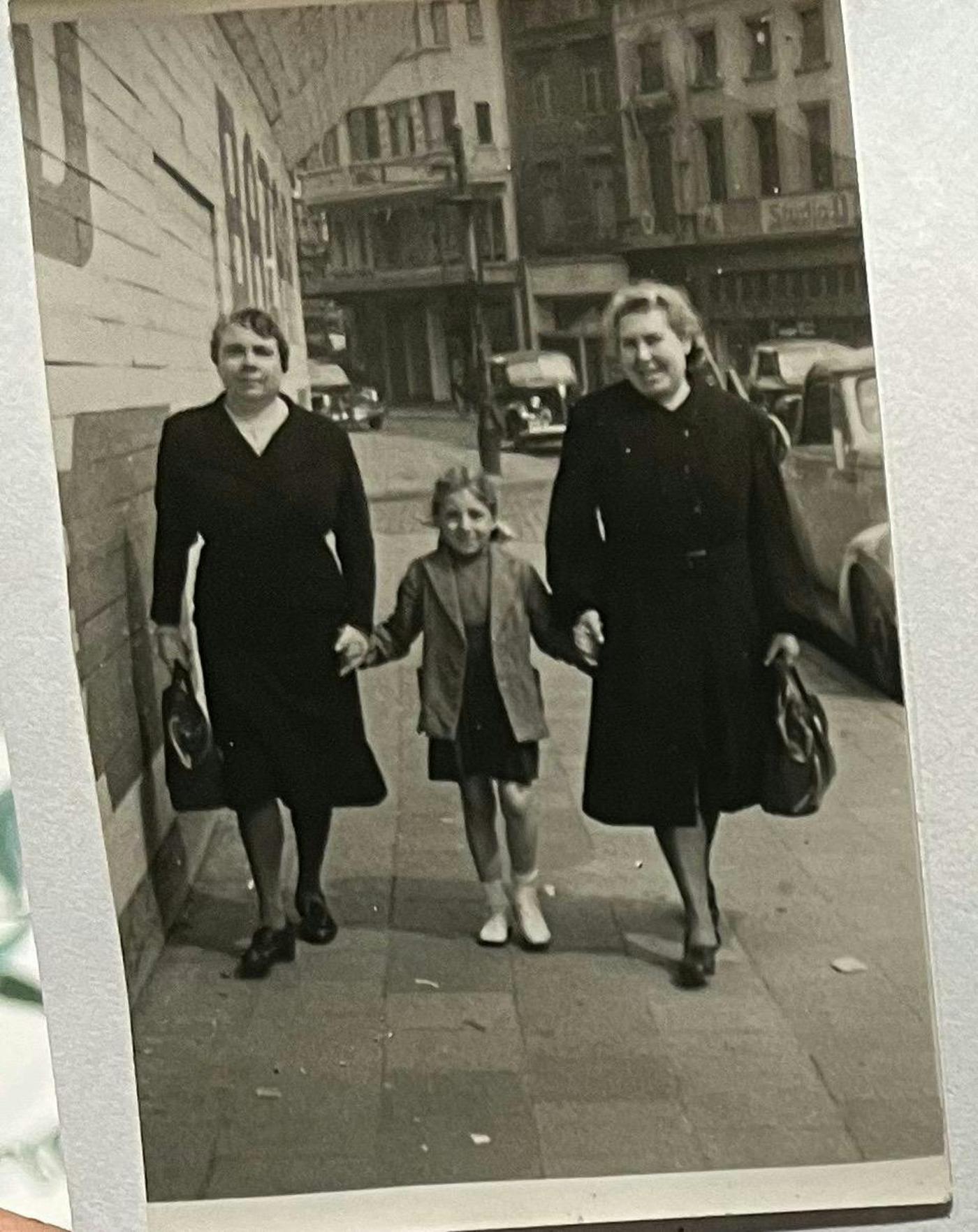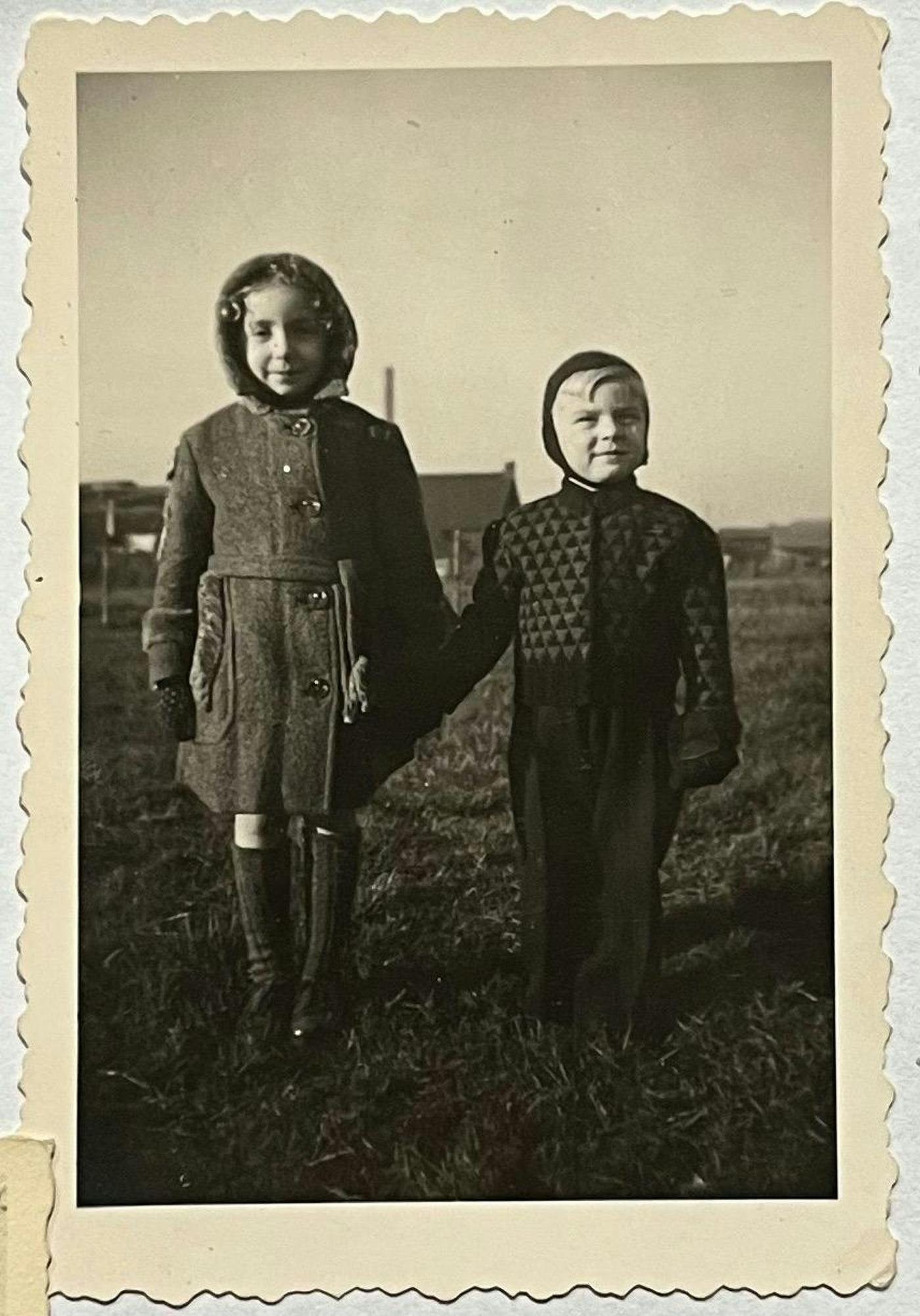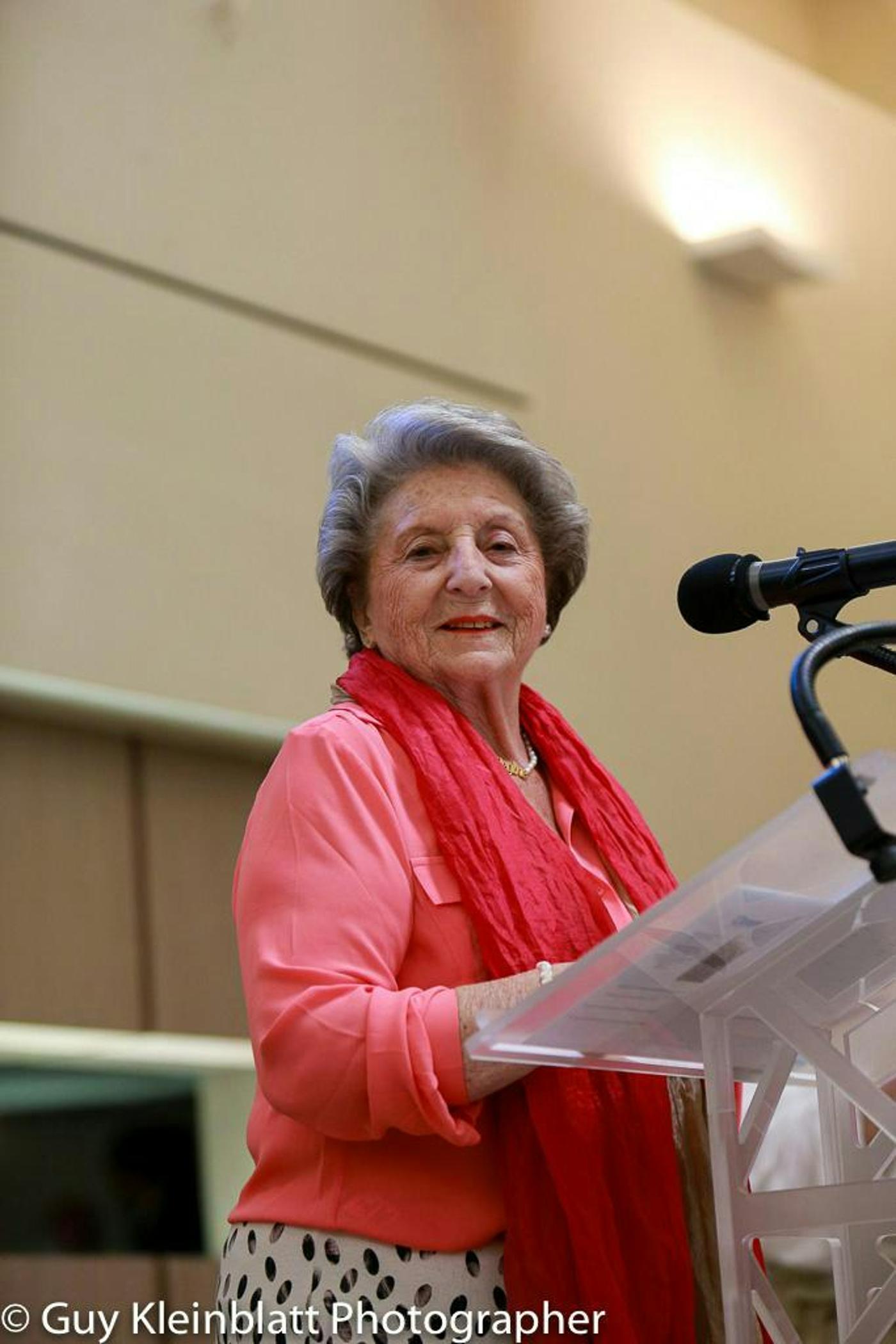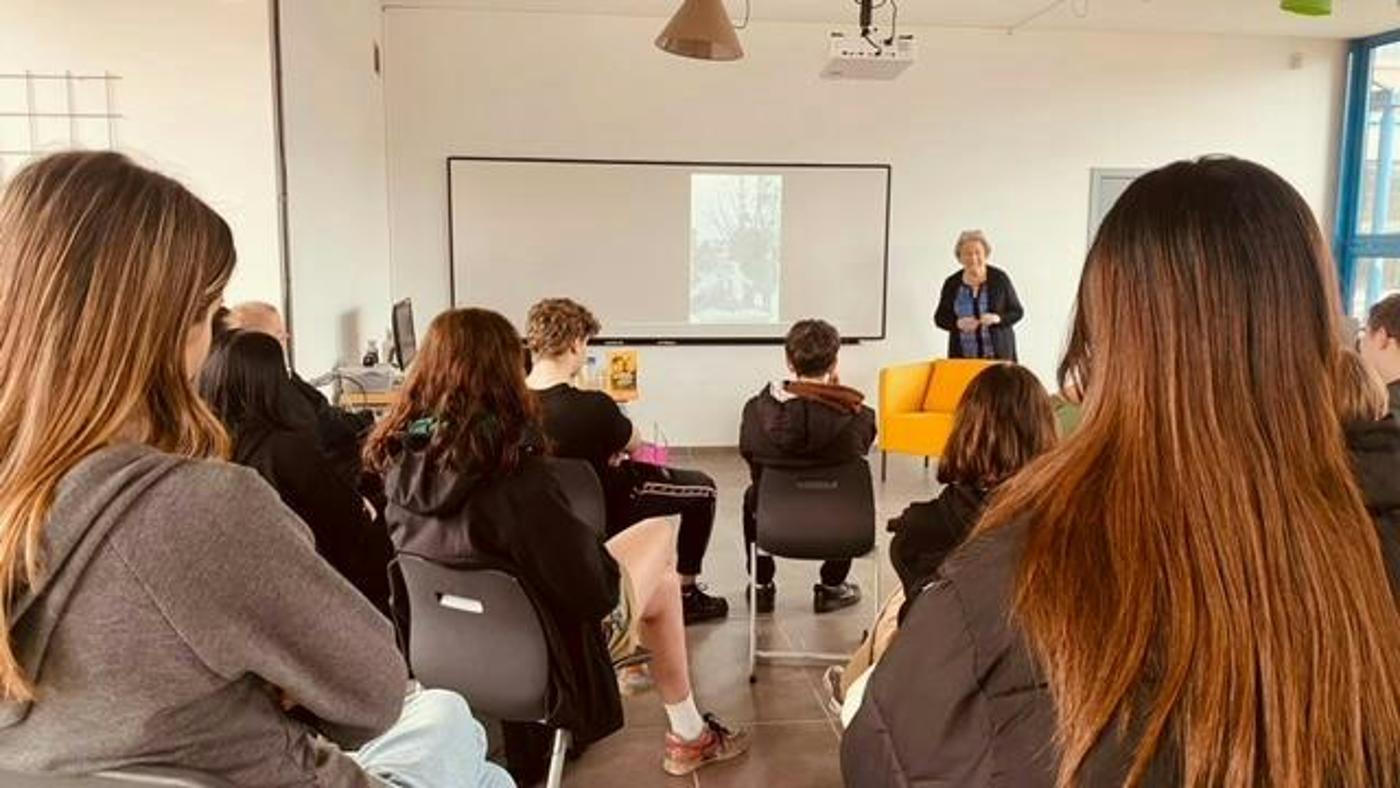During the horror of World War II, many Jewish families in Belgium were forced to hide their children in the hopes that they would avoid detection by the Gestapo and ultimately survive the war. In Belgium alone, more than 5000 children survived the genocide via disguise and concealment from the world. This is the story of Baroness Regina Sluszny: one of Belgium’s remaining Holocaust survivors, and one of the Hidden Children.
My name is Regina Sluszny, and I was a little older than a year when the war started in Belgium. I lived in Antwerp with my mother Jenta, my father Jacob, and two brothers, Marcel and Eli; born into a Jewish family who emigrated from Poland in 1930. We lived quite peacefully in Antwerp until May of 1940, when German soldiers invaded Belgium. Their main goal was to eliminate the entire Jewish population, to exterminate them. Even the children. Soon after the occupation began, they introduced new laws, specifically targeted towards the Jewish population. The first law, which came into effect in 1941, stated that all Jews had to be registered in the town hall on a separate list called the Joodselijst: the Jewish List. A copy of this list was given to the German officers in charge so that they could go and pick up all of the Jewish families and assemble them in Mechelen at the Kazerne Dossin – a detention and processing centre. From there, they were sent to the extermination camps in 27 trains between 1942 and 1944. More than 25,000 mothers, fathers, and children, including babies, were sent to be killed, and only around 1,200 came back.
Hiding in plain sight
In mid-1942 my parents realised it was too dangerous to stay in Antwerp with three small children. My father knew the daughter of a woman named Poldine from when he was working in the markets before the war. Poldine kept a pub and guesthouse with some rooms in Hemiksem - a small town some 15 minutes from Antwerp. She had two empty rooms at the guesthouse, which she offered to us, and so we all moved to Hemiksem. We had to be very silent all day because downstairs in the pub, men would come to drink beer and make small talk, and they could hear the smallest noise we made. Poldine did not want anyone to know that people were hiding upstairs because it would put her at risk. I was lucky because I had blond hair and did not look Jewish, so I was allowed to go and play in the courtyard. I was only two and a half years old, and Poldine thought that no one would believe that I was a Jewish child.
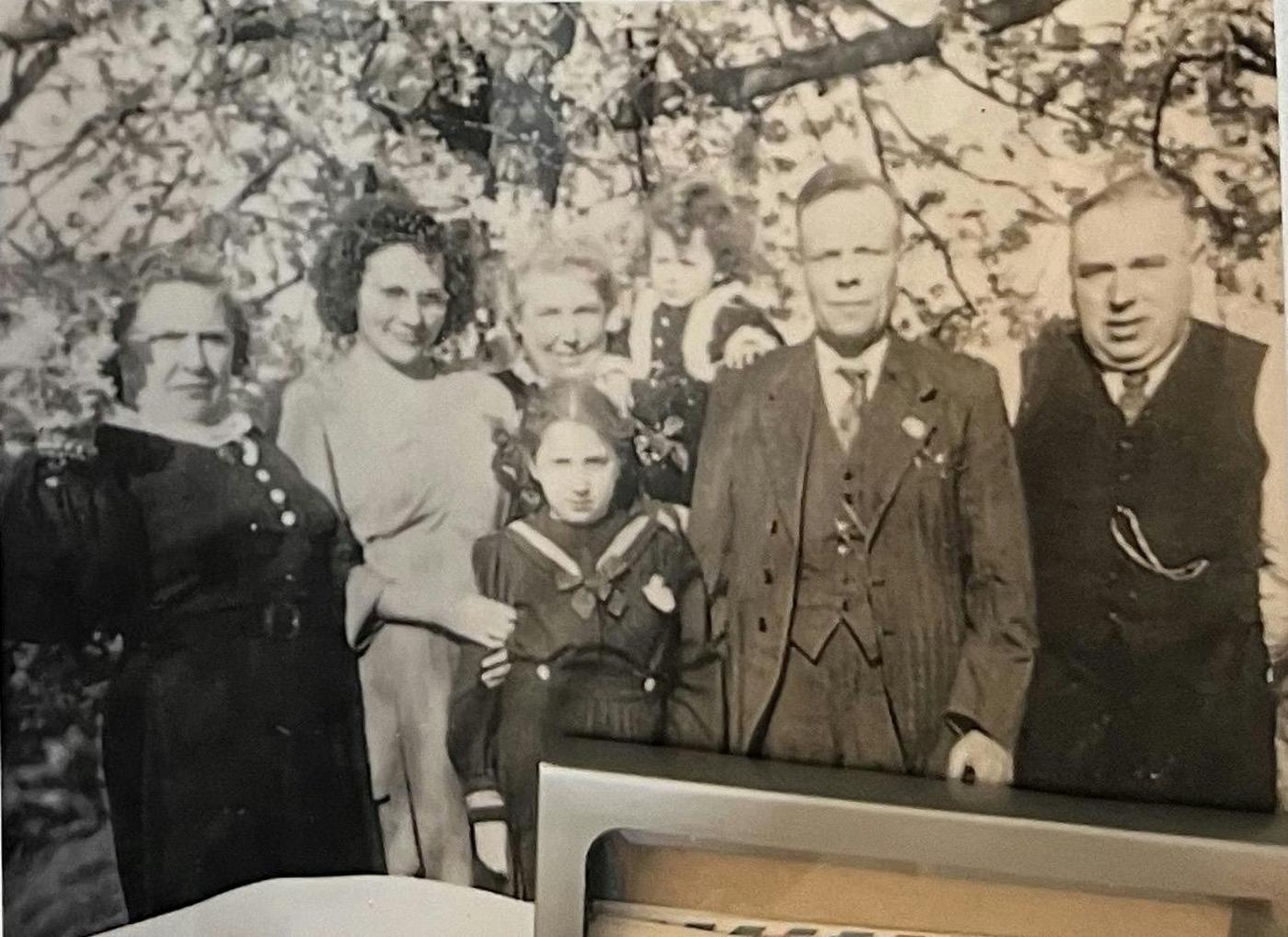
From left to right: Anna, Marcelle (Anna’s niece), Dora (Anna's sister, holding Marcelle’s young daughter), Regina, Twan (Dora’s husband) and Charel, 1943.
In the wall between the two houses in the courtyard - the pub and the house next door, which was a grocery shop - there was a hole, and I could go from one yard into the other. The people next door who owned the grocery shop were named Anna and Charel Jacobs-Van Dijck. They were the best people I have ever known.
They had no children but had two cats whom Anna loved very much, and she fed them freshly prepared food every day, the same food that she and her husband ate. One day, after she put the plate of food on the floor and before the cats arrived, I snuck through the hole and took the food because I was so hungry. I did not realise that Anna was standing behind the curtains from the kitchen window and could see me take the food. She realised immediately that if a small child, not even three years old, was taking the food from her cats, then that child must be desperate. This was my first encounter with Anna, who would become my war mother after my family was denounced to the Germans.
In Hemiksem, there was a camp with German soldiers who became informed that Jews were hiding in Poldine’s pub. We did not know who had found out that we and other Jewish families were living in secret on the first floor, but it did not matter. The mayor of Hemiksem was instructed to come and bring denounced Jews to Dossin, but we were lucky. Before coming, he sent his twelve-year-old son to Charel with a message to go to Poldine’s pub and inform us of his imminent arrival. When Charel came to my parents, he told them to take what they could carry, to take my brothers, and if they wanted, I could stay with him and Anna until my parents found a safe hiding place. My parents had no choice. They had to decide immediately and were not sure where to go. So, in that moment, they agreed to leave me with Anna and Charel and to come back for me when it was safe. My stay with these beautiful people lasted until the end of the war.
War parents
Living with Anna and Charel was a dream. I was free to run around the house and shop whenever I pleased. I had my own bedroom - which was a luxury at that time - and most importantly, I had love. They gave me everything I needed and more. Only many years following the war would we find out that everyone in Hemiksem knew that I was Jewish, but I was never denounced. When the war was over and I turned six-years-old, it came time for me to go to primary school. The kindergarten teacher told Anna and Charel that it would be better for me to go to school in Antwerp, where the school curriculum was superior. So Anna and Charel sent a note to my parents asking them to come and take me home to Antwerp. After hiding in 15 different places over the preceding three-and-a-half years of wartime, my parents and brothers had returned to Antwerp. Charel knew this because, during the time that I stayed with him and Anna, he would bring food to my parents and brothers in all the different places they were hiding.
My parents agreed, but when my mother came to pick me up, I did not recognise her. Charel reassured me that this was my mother and that she would take me home. For me, this was very strange because in Hemiksem, I was at home. My mother asked Anna and Charel, “How can we ever repay you for saving not only our daughter but also our entire family? How can we thank you for bringing us food regularly for more than three years and risking yourselves by breaking curfew to smuggle supplies to us?” My mother’s gratitude was immense. But Anna and Charel had no children of their own and loved me so much that they wanted only one thing: to maintain a relationship with me; to not have their ‘adopted’ child taken completely away from them. My mother gave them her word that I could come to them every Friday after school and be with them until Sunday evening. And that is how I lived for the rest of my youth, right up until I met my husband.
During the week, I lived with my Orthodox family and went to a Jewish school, and on the weekends, I lived with Anna and Charel like a non-Jewish child. Life was difficult for me in the beginning when I returned to living with my parents and brothers because they had experienced the war together, as a Jewish family, and I had lived it with non-Jewish people. During the week, I had to learn to be Jewish again, with all of the laws about food and behaviour, and on the weekend I did not have to think about any of it. With time, I regained my place in my family and faith, but still always held on to the other person I was able to be thanks to the two lives I lived.
Memory work
I was twenty years old when I married my husband, Georges; also a Hidden Child who had lost seven family members in the war. Anna and Charel welcomed him as part of our family. They came to our wedding and were present at the births of our two children who grew up knowing them as Aunt Anna and Uncle Charel. Throughout the rest of their lives, they considered me their daughter and I considered them a second set of parents; truly a part of my family.
Out of gratitude and remembrance, those who helped save Jews during the Holocaust are given the title of “Righteous among the Nations”, as decreed by Yad Vashem, the Holocaust Museum in Israel, and should be honoured by those whom they saved. On 13 July 2010, upon my request, Anna and Charel received a Certificate of Honour from Yad Vashem. For Anna and Charel and all of the other people who were Righteous, I continue to tell my story so that they and their courage are not forgotten.
For more than 20 years, I have visited schools and workplaces to recount both my and Georges’ testimonies of the war. I have spoken to schoolchildren as young as 12, university students, and adults of all backgrounds and faiths across Belgium and even abroad on a few occasions. Our stories have also been written about in the book, Forgotten War Children by Paul De Keulenaer. For the most part, regardless of age, the young people whom I speak to are unaware of the atrocities of World War II. This is living proof that it is as important as ever to continue telling the stories of Hidden Children so that future generations do not go uneducated and let history repeat itself. For without memory of the past, there is no future.
A note on disinformation from NATO’s public diplomacy team:
Despite abundant documentation of the genocide and detailed evidence of the atrocities committed during WWII, Holocaust denial persists. Anti-Semitic discourse and disinformation about this heinous historic crime spreads easily online, exacerbated by social media and sophisticated, yet mainstream, digital tools. But disinformation is not new; it helped enable the Holocaust in the first place. The Nazi party weaponised disinformation, propaganda and the media to facilitate Adolf Hitler’s rise to power in Germany in the 1930s. Nazi disinformation campaigns targeted the most vulnerable groups of society in order to form general public opinion.
To this day, disinformation remains a powerful instrument for malign actors to interfere in society by trying to undermine values, democracy, and the rule of law. They use disinformation to sow division and create confusion, exacerbating polarisation and weakening public trust in institutions. They also try to shape attitudes and behaviours in the long term to influence the decision-making of leaders and ordinary citizens and to inspire real-world action, like spreading hatred against minorities.
In this context, countering disinformation is very important, not only because as NATO we protect and defend our values, but also because disinformation about the Holocaust prevents us from learning the facts, understanding the history of what happened and keeping such an atrocity from occurring again. What can NATO do? First, NATO studies the information environment in order to understand it, especially disinformation, and enables a credible response. Second, NATO communicates and engages with citizens. It views fact-based, transparent and proactive communications as the best way to counter disinformation. If citizens are well informed, it limits the chances that hostile narratives will twist their perception of reality, ensuring that everyone can form opinions and make decisions based on facts.

